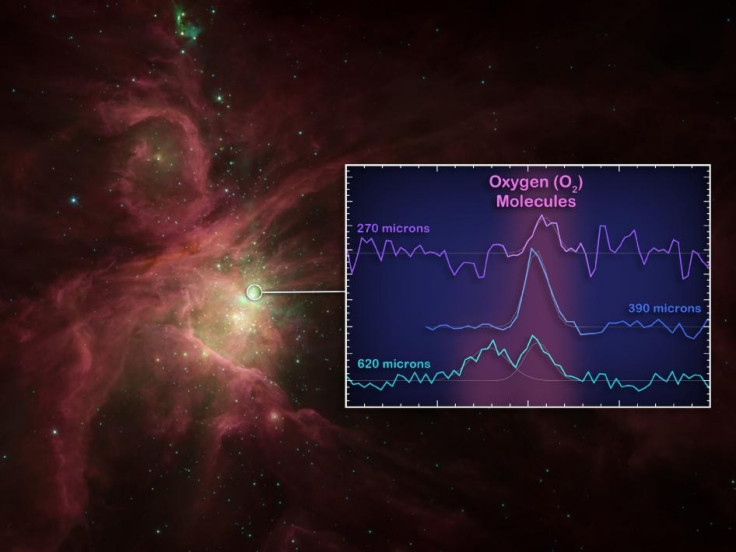Herschel Uncovers Elusive Oxygen Molecule Hidden in Orion Nebula

The European Space Agency's Herschel telescope found the first evidence of molecular oxygen in Orion Nebula, ending a 230-year mystery as to whether the molecule certainly existed in space.
The molecules were detected in the star-forming region of the Orion constellation. The amount of oxygen found is ten times larger than what was indicated by previous observations of other molecular clouds, but is still well below theoretical expectations, according to ESA.
Nevertheless, the results suggest that in special circumstances, the heat from newborn stars can release oxygen frozen out on dust grains, and increase the amount of molecular oxygen able to form in warm, dense gas clouds, ESA said.
Oxygen is the third most abundant element in the universe after hydrogen and helium, and a fundamental element for life on Earth. Thus, great efforts have been made to find the element in space.
"Theory suggests we should find lots of oxygen atoms locked in molecular oxygen (O2), but previous searches kept falling short of such a large amount," said Paul Goldsmith from the Jet Propulsion Laboratory in the US in a statement. "With these new data, we finally have a strong hint at where cosmic oxygen might be hiding."
Goldsmith is the NASA Herschel Project Scientist and first author of a paper detailing the detection.
The hunt to find space oxygen is challenging. Molecular oxygen can be considered to be a tiny dumbbell, which can rotate end-over-end at different rates, and as with many other molecules, oxygen produces a number of lines at a distinct set of wavelengths, according to ESA.
But with the large amount of molecular oxygen in Earth's atmosphere it's almost impossible to discover cosmic signals with ground-based observations. This is because atmospheric oxygen absorbs virtually all radiation at the wavelengths of interest, and therefore, this elusive molecule must be pursued using space-borne instruments, ESA said.
"Determining the actual abundance of O2 in molecular clouds is crucial to understanding how strongly this molecule contributes, relative to other species, to the cooling of interstellar material," explains co-author René Liseau from Chalmers University in Gothenburg, Sweden, in a statement.
ESA said the cooling of molecular clouds is one of the essential steps leading to the formation of stars.
Goldsmith and his colleagues believe that oxygen is locked up in ice that coats the surface of tiny dust grains. They believe the oxygen found by Herschel in the Orion Nebula was formed after starlight warmed the icy grains, which release water and oxygen.
"This explains where some of the oxygen might be hiding," Goldsmith said, as reported by The Associated Press. "But we didn't find large amounts of it, and still don't understand what is so special about the spots where we find it. The universe still holds many secrets."
The Herschel Oxygen Project was specifically designed to shed light on this issue.
"The discovery of at least part of the 'missing' interstellar oxygen is a remarkable result achieved by Herschel," said Göran Pilbratt, ESA Herschel Project Scientist, in a statement.
He concluded that "more observations of other molecular clouds are planned, and we are eagerly awaiting the results of this on-going search for one of the most elusive molecules in space."
© Copyright IBTimes 2024. All rights reserved.












